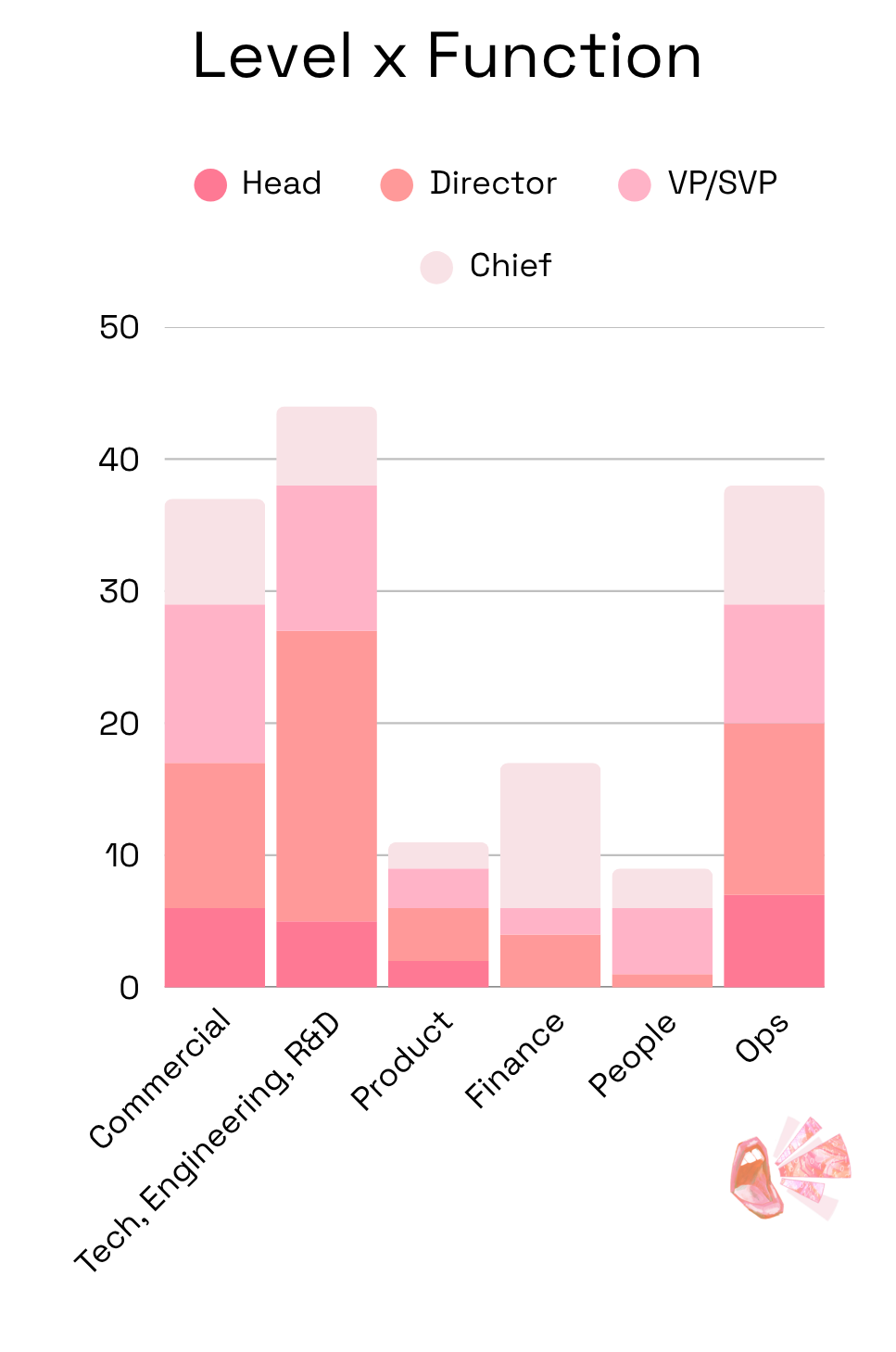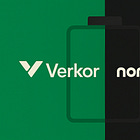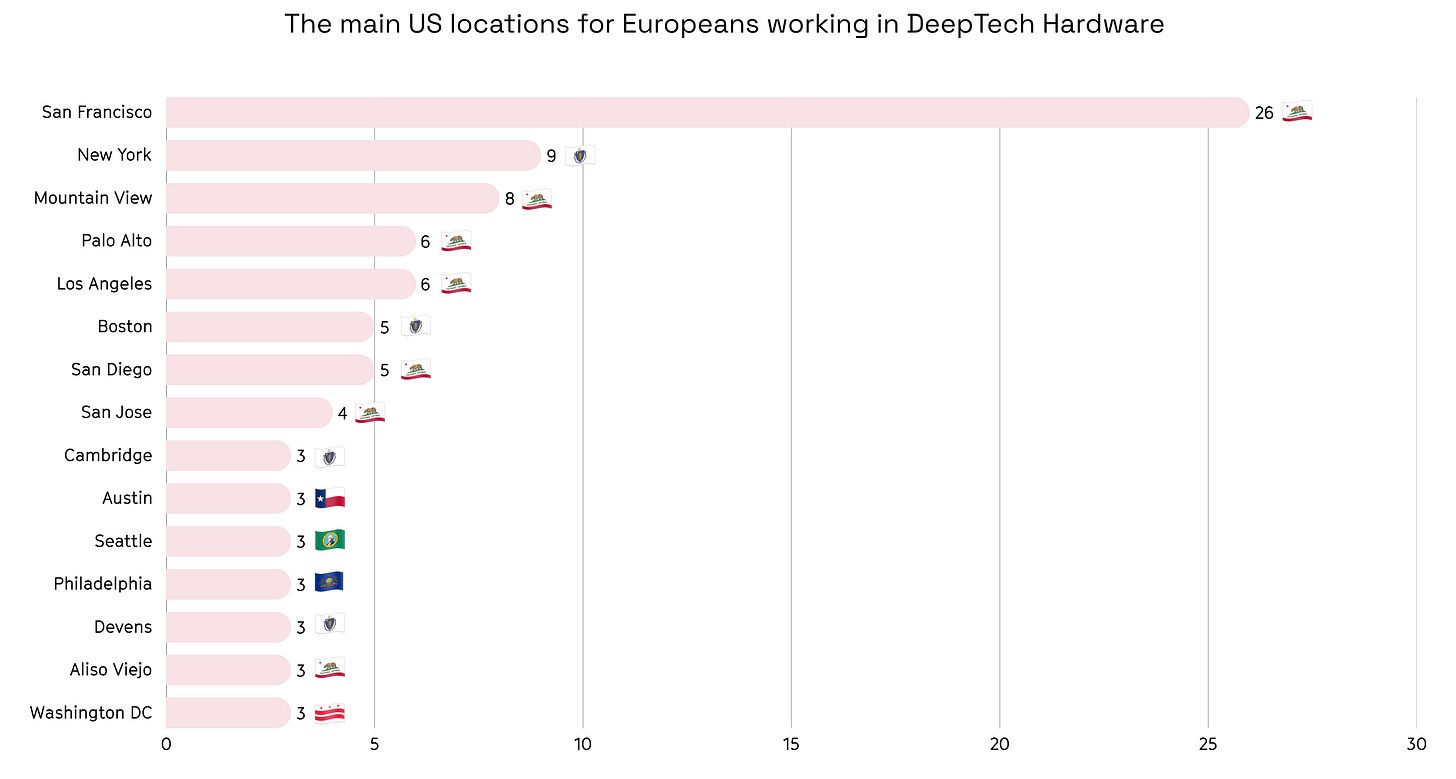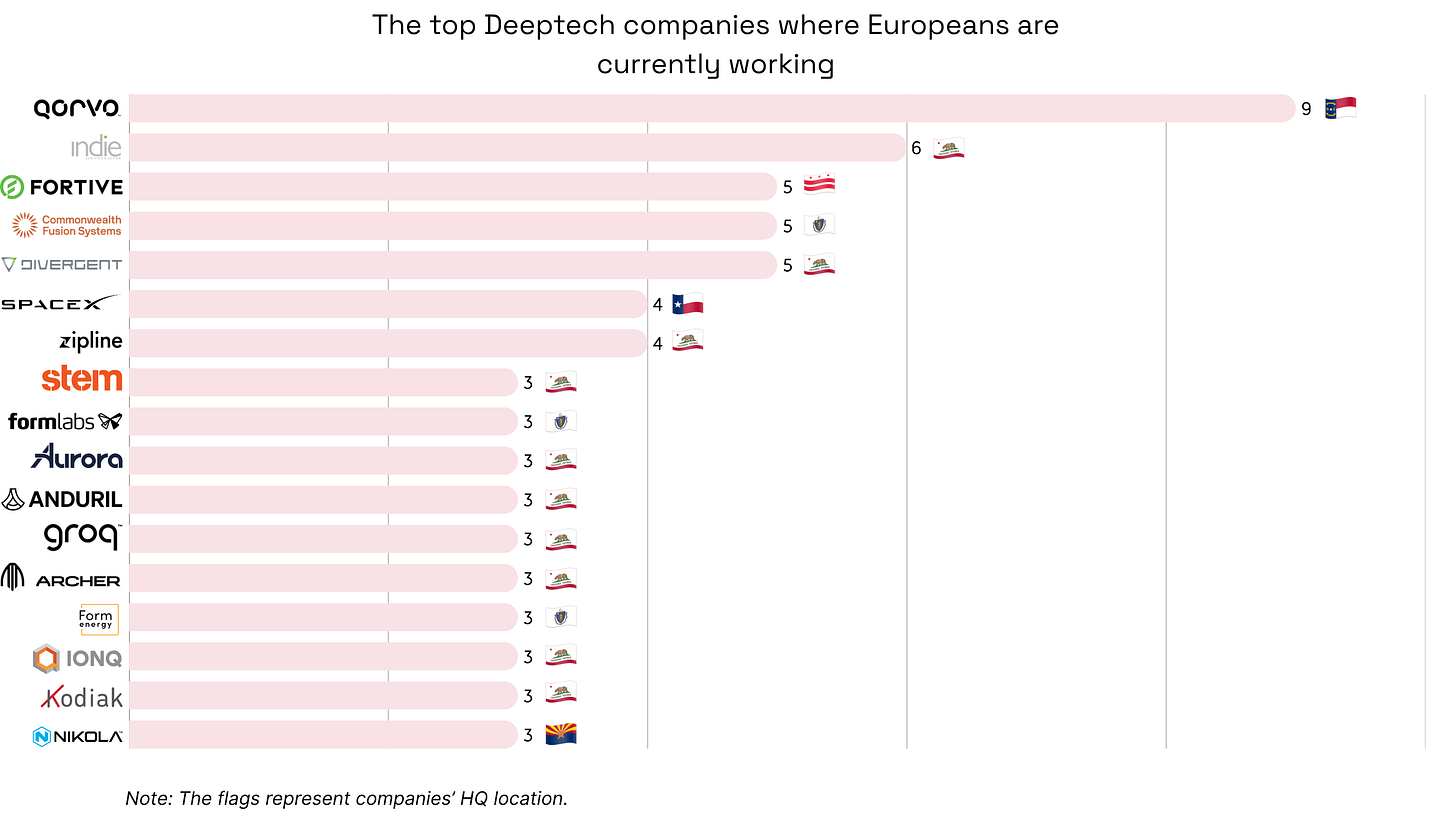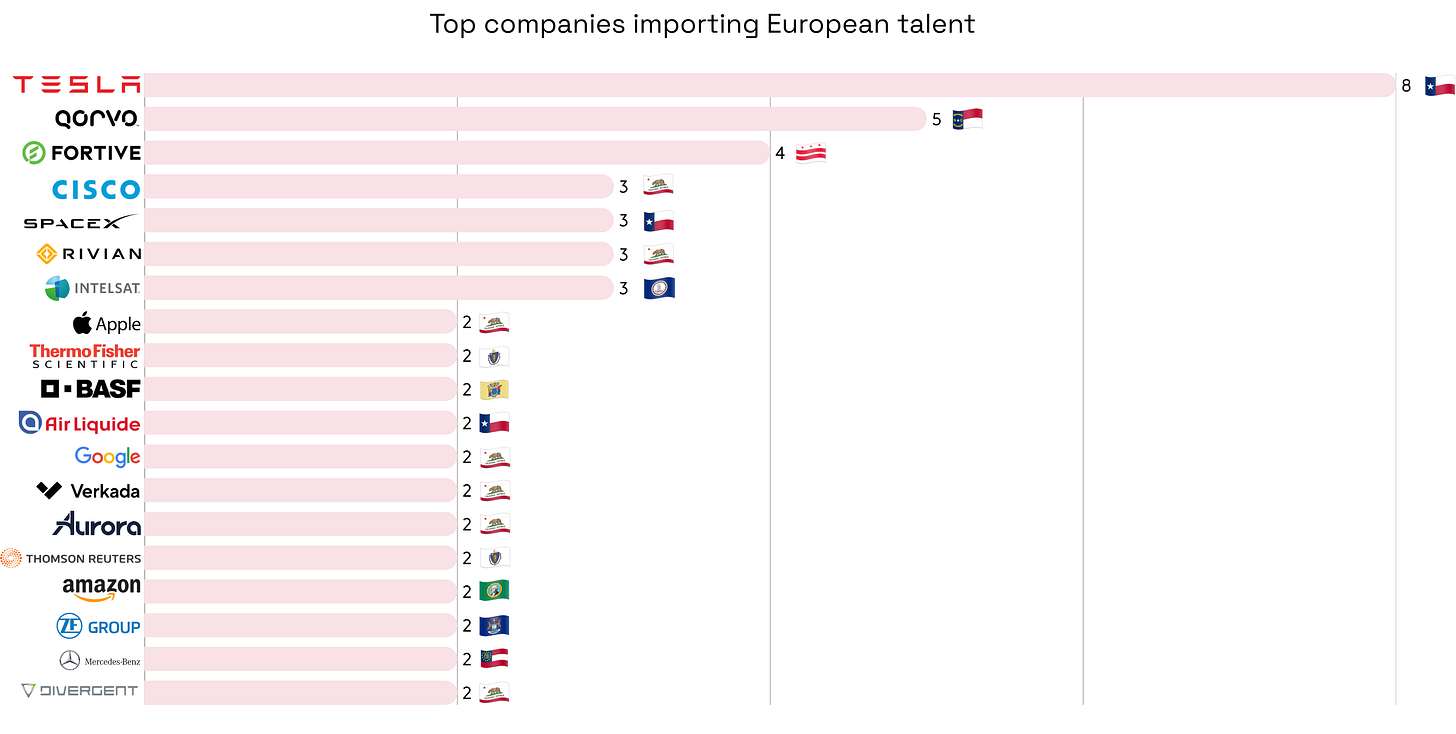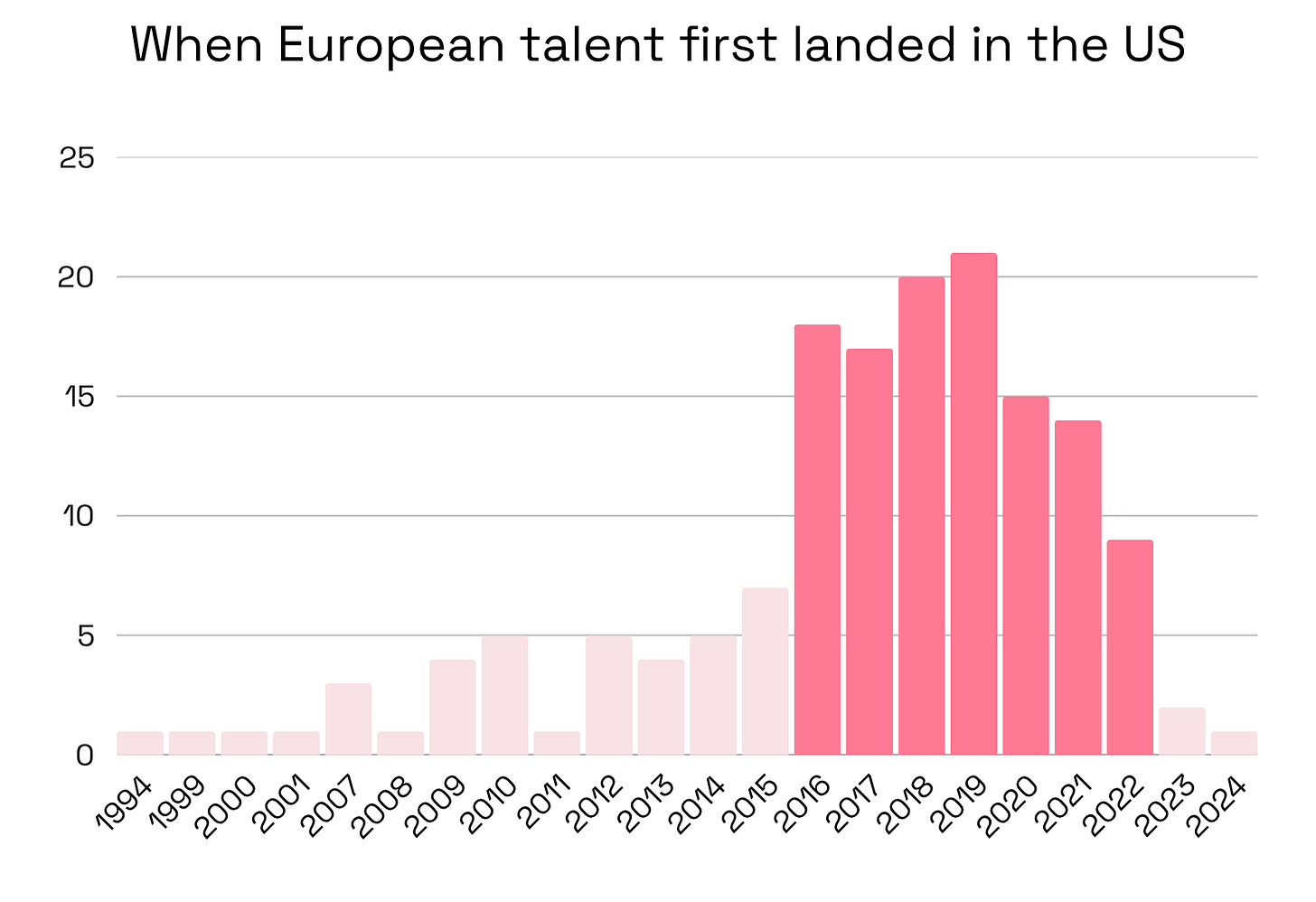From Europe to the US: Mapping DeepTech Hardware Talent Located in the US
Where does Europe’s DeepTech Hardware talent land in the US, and which companies are the top employer hubs?
We recently mapped the European DeepTech Hardware talent pool, currently based in the US. To do this, we started by identifying the top 100 DeepTech Hardware companies in the US by valuation, growth, and funding. Then, we looked for senior leaders with over 15 years of total work experience and at least 5 years in a dedicated senior role. Each of these individuals also completed an academic degree in Europe and worked full-time in Europe for at least two years. In total, we found 158 European leaders working in commercial, product, tech, engineering, R&D, operations, people, and finance roles.
So, where is this European talent concentrated? And which DeepTech Hardware companies have become the top employer hubs?
Let's find out.
Role & functional distribution
We found European talent across all levels of the leadership layer, with most C-level talent appearing in Finance, Operational, Commercial or Engineering roles. The Tech, Engineering, and R&D function dominates, representing 28% of the sample. That said, the C-level share within it is just 13.6%, which may be due to the CTO seat often being held by a technical co-founder.
What are the key US locations for Europeans working in DeepTech Hardware?
If you were wondering which side of the US to focus your search on, start with the West Coast. It’s home to 9 of the top 15 cities for European DeepTech talent and clearly outpaces the East Coast in terms of company headquarters and hiring activity (see below).
And no surprise: San Francisco stands out as the main hub, attracting ~3x more European talent than the second-ranked city, New-York (26 vs. 9 leaders). California as a whole state hosts 53% of all European talent working in DeepTech Hardware across the US, and places 7 cities in the top 15.
What are the top current-employer hubs?
We looked at their current companies to identify which ones rely most heavily on European talent. Given the relatively small differences between many of them, we focused only on companies with at least three European leaders.
If you're looking for European talent working for a US DeepTech Hardware company, Qorvo is the top employer hub. The company, which provides RF solutions for mobile, infrastructure, and defense, employs 9 European leaders - all at the Director level - across People, Ops, and Tech, Engineering, and R&D functions.
Searching by sector? The most represented ones are Energy & Climate (22%), Autonomous Systems & Robotics (16%), Industrial & Manufacturing (15%), Semiconductors (13%), and Space & Aerospace (12%). Defense & Security (7%), by contrast, is underrepresented but for a good reason: Confidentiality requirements and the national security sensitivities surrounding many defense projects make hiring foreign talent more complex. Thus, Defense companies need to be extra careful when building their leadership team.
Some examples of European C-level leaders working at one of these top 15 employer hubs:
Michael Wittmann, COO at Indie Semiconductor (German nationality)
Andreas Wendel, CTO at Kodiak Robotics (Austrian nationality)
David Lakatos, CPO at Formlabs (Hungarian nationality)
Valeria Riccardo, Chief Engineer at Commonwealth Fusion Systems (Italian nationality)
Which US companies act as primary entry points for European talent?
Instead of focusing only on where European talent is currently based, we also looked at where they first landed in the US job market. The goal: to find out which companies are the most active entry points for European talent entering the US DeepTech Hardware ecosystem.
Interestingly, some of the top entry points aren’t DeepTech Hardware companies at all. On some resumes, you'll find some big tech names like Google, Apple, or Amazon, which provide relocation and support. This suggests a pattern: many European leaders began their US careers at tech corporations before transitioning into DeepTech Hardware startup or scaleup settings.
You will also find that several European multinationals play a key role in this transatlantic talent pipeline. It seems that companies like ZF Group, Air Liquide, or Mercedes-Benz moved talent internally, starting careers in Europe, then relocating senior leaders to their US operations.
Here are a few examples:
Tilo Schwarz began his career with Mercedes-Benz in Ulm, Germany, before relocating to San Francisco.
Marco Bracalente worked for ZF Group in Turin, Italy, before moving to their Michigan office in Farmington Hills.
Ali Younis transitioned from SES Satellites in Europe to Intelsat in Washington, D.C., which was part of SES at the time.
When did they arrive?
If you look at the timeline, there’s a clear increase between 2016 and 2019. What triggered it? Simple: Investments in DeepTech funding in the US more than quadrupled over five years, growing from $15b in 2016 to over $60b by 2020. And you know how it goes: where the money goes, the talent follows.
This increase stopped in 2019 – likely due to the pandemic – but numbers remained higher from 2020 to 2022 compared to pre-2016 levels. This also matches closely with the median time spent in the US among these leaders, which is 7.6 years.
But the drop-off in 2023 and 2024 is clearly the craziest stat in this piece. It reflects both the economic changes in venture since 2022 as well as the political shifts in the US, which have raised immigration risks for companies and made the scientific funding environment in the US more uncertain.
Conclusion: Where can you find European talent in the US DeepTech Hardware Market?
It is encouraging to see so many European talents in the C-suite and senior leadership of top US DeepTech Hardware companies.
The inflow has slowed, though, and there is a clear drop-off in Europeans moving to the US. From our seat as a search firm, we are now seeing the pattern start to reverse. Senior leaders who built careers in US organizations are actively open to bringing that experience back to Europe. Helsing is a recent concrete example.
Which is why now is a good moment to approach those leaders. If you are building in Europe, there is a cohort that knows the US market, has seen scale, and is ready to apply that playbook here. We are already moving these leaders back.
Want to see how we can support your search? Visit our website to explore our services and learn what we can do for you.


